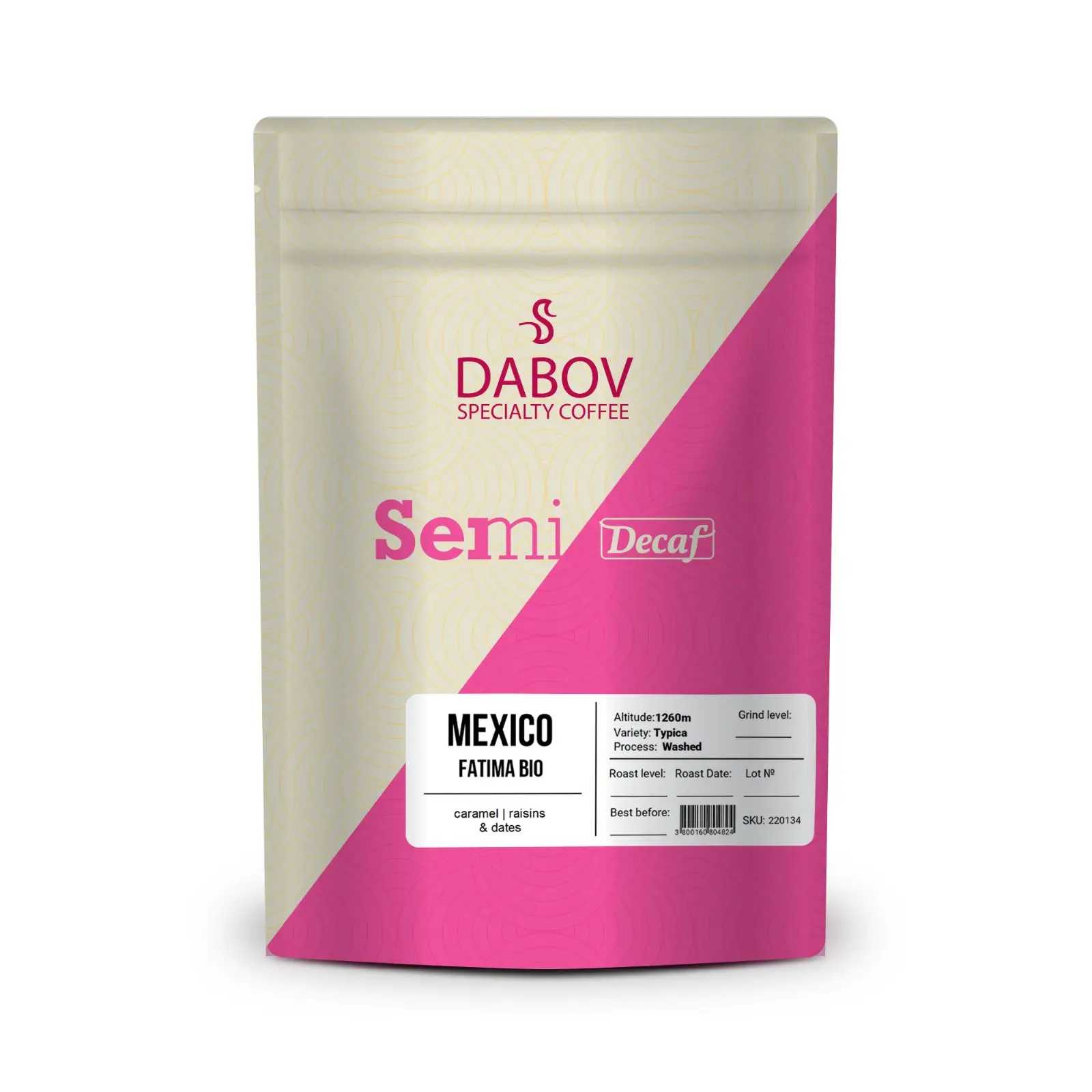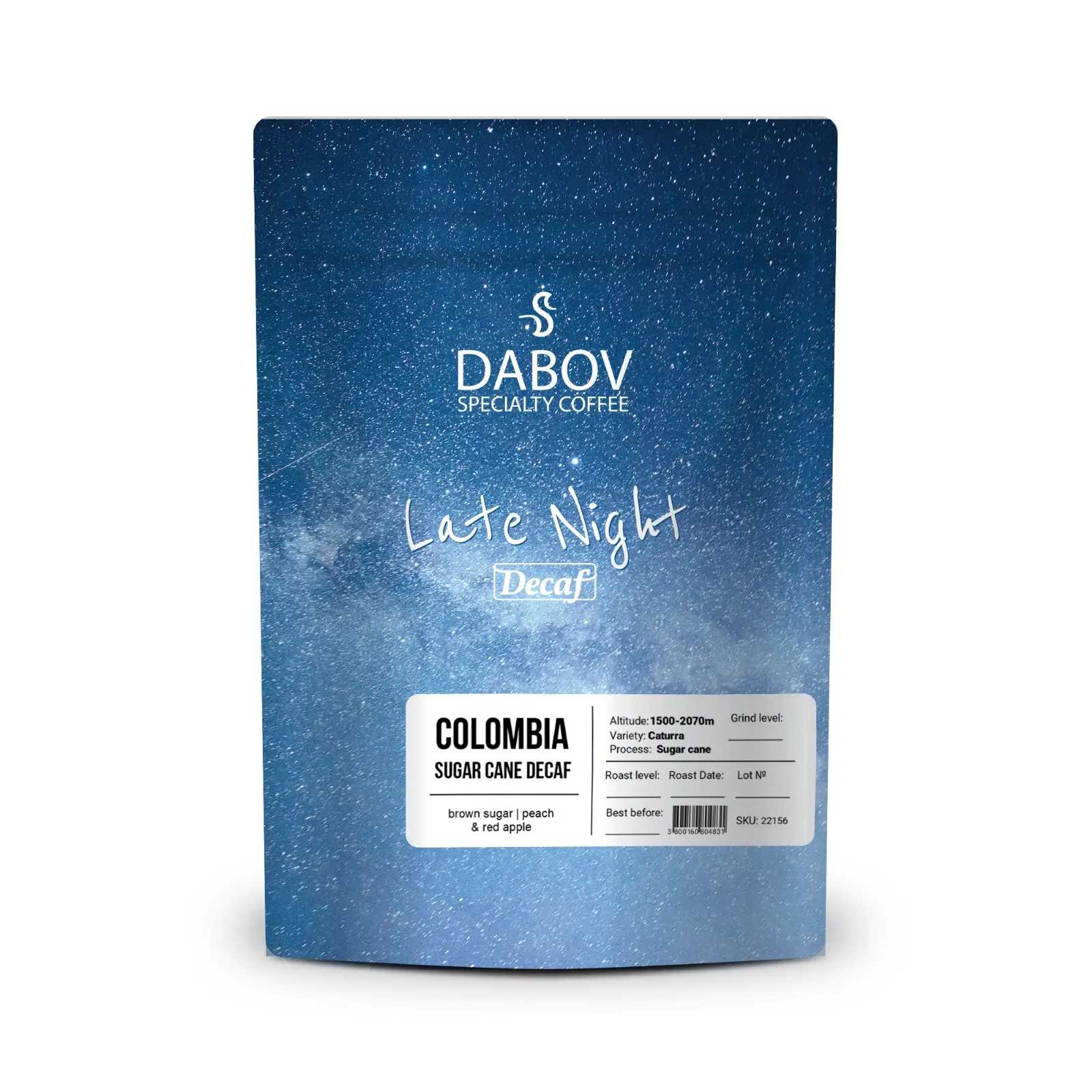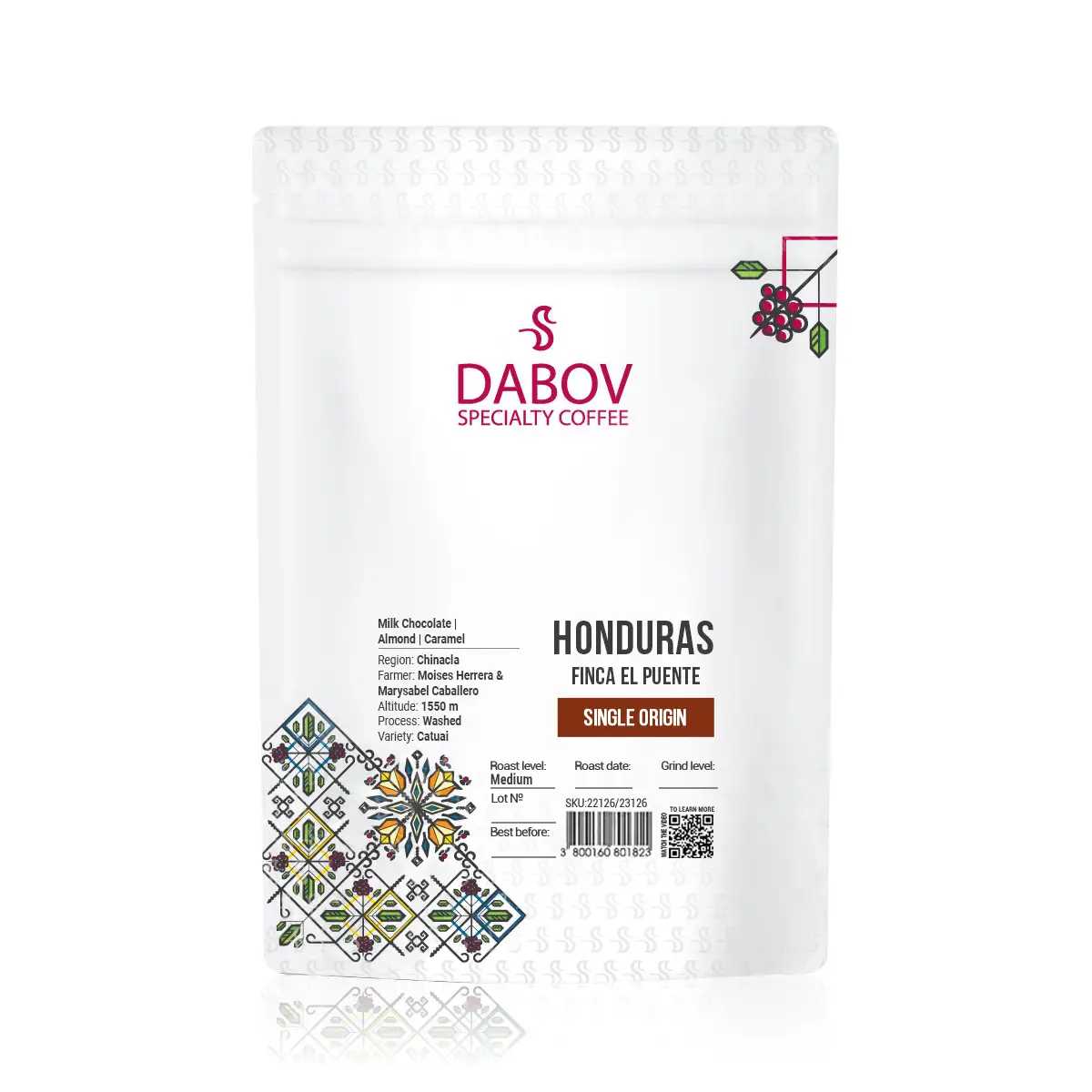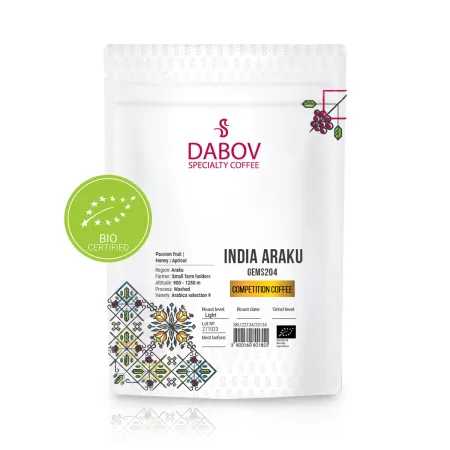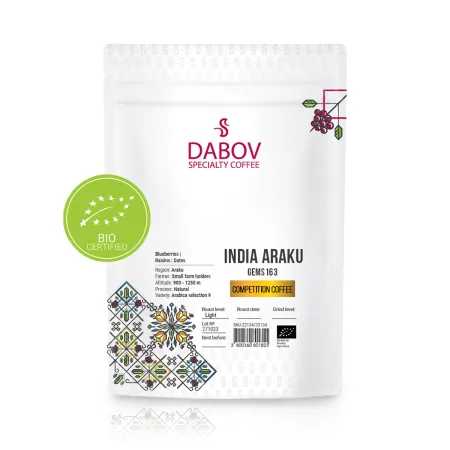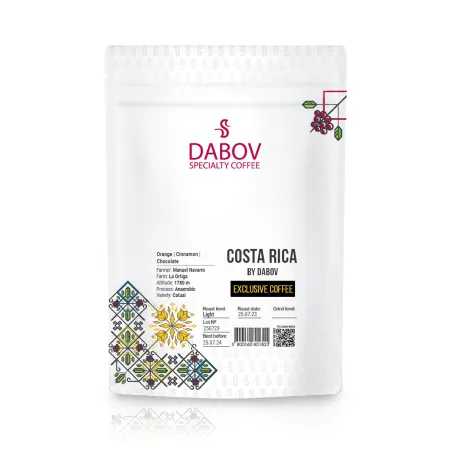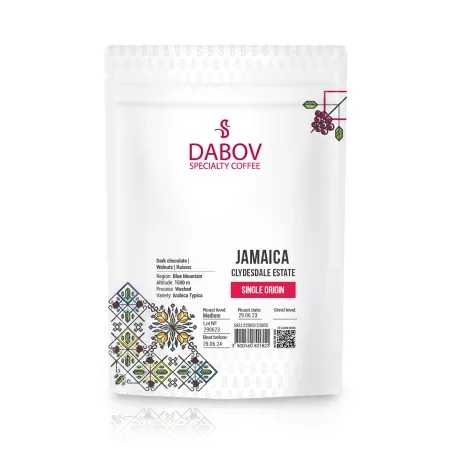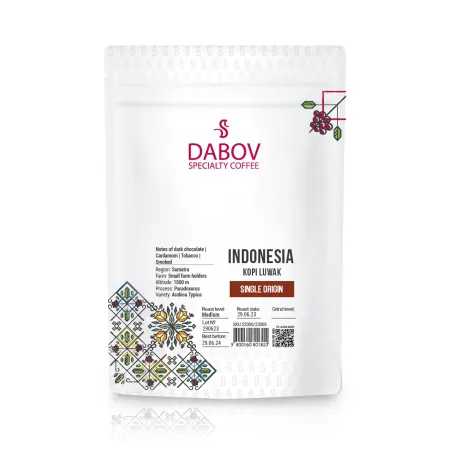Balancing Acidity, Body, and Aftertaste for the Perfect Cup
Discover the art of crafting the perfect cup of coffee by balancing acidity, body, and aftertaste. Each element plays a pivotal role in the overall flavor profile of your brew. Explore the science behind coffee flavor, from understanding acidity to the smoothness of body, and the lingering aftertaste that completes the experience. This guide offers insights into selecting the right beans, brewing methods, and techniques to achieve flavor harmony. Whether you’re a novice or a seasoned barista, find practical tips to refine your brewing skills. Join us in this flavorful journey and elevate your coffee appreciation to new heights!
Introduction
Coffee, the beloved elixir that fuels our mornings and ignites our senses, is a complex symphony of flavors waiting to be unlocked. At the heart of every exceptional cup lies a delicate balance of three crucial elements: acidity, body, and aftertaste. These components, when harmoniously combined, create a sensory experience that transcends mere caffeine consumption and elevates coffee drinking to an art form. In this comprehensive exploration, we'll delve deep into the intricacies of these flavor profiles, unraveling the secrets to achieving the perfect balance and, ultimately, brewing the ideal cup of coffee.
The pursuit of the perfect cup is not merely a quest for personal satisfaction; it's a journey that connects us to the rich tapestry of coffee's history, from the sun-drenched plantations where the beans are nurtured to the skilled hands of roasters who coax out their hidden potential. By understanding the interplay between acidity, body, and aftertaste, coffee enthusiasts can fine-tune their brewing techniques, select beans with precision, and unlock a world of flavor nuances that might otherwise go unnoticed.
As we embark on this flavorful odyssey, prepare to sharpen your palate, challenge your preconceptions, and gain insights that will forever change the way you perceive and appreciate your daily brew. Whether you're a seasoned barista or a curious novice, this article will equip you with the knowledge and techniques to transform your coffee routine into a daily ritual of sensory delight.
Section 1: Understanding Coffee Flavor
1.1 The Components of Coffee Flavor
Coffee flavor is a multifaceted phenomenon that engages all of our senses, creating a rich tapestry of experiences with every sip. To truly appreciate the complexity of coffee, one must first understand the primary components that contribute to its overall flavor profile. These elements work in concert to create the unique character of each cup, and mastering their interplay is key to brewing exceptional coffee.
At the forefront of coffee flavor is aroma, the enticing bouquet that greets us before we even take our first sip. The volatile compounds released during brewing stimulate our olfactory receptors, setting the stage for the taste experience to come. Aroma can range from floral and fruity notes to earthy and spicy undertones, often providing the first clue to a coffee's origin and roast level.
Acidity, often misunderstood and sometimes feared, is the bright, lively quality that adds dimension to coffee's flavor. It's the spark that dances on your tongue, reminiscent of the crisp tartness in a ripe apple or the zesty notes in a fine wine. Far from being unpleasant, well-balanced acidity contributes to coffee's complexity and prevents it from tasting flat or dull.
Body, the next crucial component, refers to the weight and texture of the coffee in your mouth. It's the difference between a light, tea-like brew and a rich, creamy espresso. The body can be influenced by factors such as the coffee's origin, roast level, and brewing method, each contributing to the overall mouthfeel and satisfaction of the cup.
Lastly, we have aftertaste, the lingering impression that remains after swallowing. A good aftertaste can prolong the enjoyment of your coffee, leaving pleasant flavor notes that evolve over time. It's the final act in the flavor performance, tying together the entire sensory experience and often revealing subtle nuances that might have been overlooked in the initial taste.
These components don't exist in isolation; they interact in complex ways, each influencing and being influenced by the others. For instance, a coffee with high acidity might seem brighter when paired with a light body, while the same level of acidity could be perceived differently in a full-bodied brew. Similarly, the aroma can set expectations for taste, which in turn can affect how we perceive the aftertaste.
Understanding these elements and their interactions is crucial for anyone looking to elevate their coffee experience. It allows for a more nuanced appreciation of different coffee varieties and brewing methods, and provides a framework for describing and analyzing the flavors we encounter. As we delve deeper into each component in the following sections, keep in mind that the ultimate goal is not just to identify these elements, but to learn how to balance them for the perfect cup.
1.2 Importance of Balance in Coffee Brewing
The concept of balance in coffee brewing is akin to the harmony in a well-composed piece of music. Just as a symphony requires each instrument to play its part in perfect proportion, a truly exceptional cup of coffee demands a harmonious blend of its flavor components. Achieving this balance is not merely a matter of personal preference; it's the cornerstone of crafting a coffee that can be universally appreciated for its quality and complexity.
When we speak of balance in coffee, we're referring to the ideal interplay between acidity, body, and aftertaste, supported by the aromatic notes that enhance the overall experience. A well-balanced coffee allows each element to shine without overpowering the others, creating a sensory experience that is both satisfying and intriguing. This balance is what separates a good cup of coffee from a truly memorable one.
The importance of balance becomes evident when we consider the consequences of its absence. An overly acidic coffee, for instance, can taste sharp and sour, overwhelming the palate and masking other subtle flavors. Conversely, a coffee lacking in acidity might come across as flat or dull, failing to engage the senses fully. Similarly, a coffee with too much body can feel heavy and cloying, while one with insufficient body might seem weak and unsatisfying.
Achieving the right balance is particularly crucial when it comes to aftertaste. A well-balanced coffee should leave a pleasant lingering sensation that entices you to take another sip. An imbalanced brew, however, can result in an aftertaste that's either too bitter, astringent, or simply forgettable, detracting from the overall enjoyment of the coffee.
Moreover, the quest for balance in coffee brewing is not just about avoiding negative attributes; it's about creating a synergy that elevates the entire drinking experience. When acidity, body, and aftertaste are in perfect harmony, they can reveal flavor notes and subtleties that might otherwise go unnoticed. This balance allows the drinker to appreciate the full spectrum of flavors present in the coffee, from the bright, fruity top notes to the deep, rich undertones.
It's worth noting that the ideal balance can vary depending on the coffee's origin, roast level, and intended use. For example, an espresso blend might require a different balance than a coffee intended for cold brew. Understanding how to adjust and fine-tune these elements for different coffees and brewing methods is a skill that separates casual coffee drinkers from true connoisseurs.
Achieving balance in coffee brewing is both an art and a science. It requires a deep understanding of coffee's flavor components, careful attention to brewing variables, and often, a willingness to experiment and adjust. As we explore each component in detail in the following sections, we'll provide insights and techniques to help you master the art of balance, enabling you to consistently brew coffee that delights the senses and satisfies even the most discerning palates.
Section 2: Coffee Acidity
2.1 What is Coffee Acidity?
Coffee acidity is one of the most misunderstood yet crucial aspects of coffee flavor. Far from being a negative attribute, acidity is a prized characteristic that contributes significantly to coffee's complexity and vibrancy. To truly appreciate coffee acidity, it's essential to distinguish it from sourness, a common misconception among coffee drinkers.
Acidity in coffee refers to the bright, lively sensation that creates a sense of liveliness on the palate. It's the quality that makes your taste buds tingle and adds a refreshing dimension to the flavor profile. This sensation is often described using terms like "brightness," "vibrancy," or "liveliness." In contrast, sourness is an unpleasant, sharp taste that results from under-extraction or the use of subpar beans.
The role of acidity in enhancing flavor complexity cannot be overstated. It acts as a counterpoint to the other flavor components, providing balance and preventing the coffee from tasting flat or one-dimensional. A coffee with well-balanced acidity will have a clean, crisp finish that leaves you wanting another sip. It can bring out subtle flavor notes, making fruity coffees taste more vibrant and adding depth to chocolatey or nutty profiles.
From a chemical perspective, coffee acidity is primarily attributed to various organic acids present in the beans. These acids develop during the growing process and are further influenced by factors such as altitude, soil composition, and processing methods. During roasting, some of these acids break down, while others are created, leading to the complex acidity profile we experience in the final brew.
It's important to note that acidity in coffee doesn't necessarily correlate with pH levels. While coffee is indeed acidic in terms of pH (typically ranging from 4.5 to 6), the perceived acidity we taste is more related to the specific organic acids present and their concentrations. For instance, citric acid contributes to a bright, citrusy acidity, while malic acid might impart an apple-like tartness.
Understanding coffee acidity allows us to appreciate the nuances of different coffee origins and roast levels. High-altitude, light-roasted coffees from regions like Kenya or Ethiopia are often prized for their bright, complex acidity. In contrast, coffees from lower altitudes or those subjected to darker roasts might have a more subdued acidity, giving way to other flavor characteristics.
As we delve deeper into the world of coffee acidity, we'll explore the various types of acidity found in coffee and how to balance this crucial element for the perfect cup. By developing a nuanced understanding of acidity, coffee enthusiasts can elevate their brewing skills and appreciation for this complex beverage.
2.2 Types of Acidity
The world of coffee acidity is rich and diverse, with various types of acids contributing to the overall flavor profile. Understanding these different acids and their characteristics can significantly enhance your coffee tasting experience and help you identify the unique qualities of different coffee origins. Let's explore some of the primary types of acidity found in coffee:
- Citric Acid: Perhaps the most recognizable form of acidity in coffee, citric acid imparts bright, fruity notes reminiscent of citrus fruits. It's often described as lively and refreshing, adding a zesty quality to the coffee. Coffees high in citric acid might evoke flavors of lemon, lime, or grapefruit. Ethiopian Yirgacheffe coffees are renowned for their pronounced citric acidity, often described as having a lemonade-like quality.
- Malic Acid: This type of acidity is commonly associated with green apple flavors. It contributes a crisp, clean acidity that can add complexity to the coffee's flavor profile. Malic acid is often found in high-altitude coffees and can provide a pleasant tartness that balances well with sweeter notes. Some Central American coffees, particularly those from Guatemala, are known for their malic acidity.
- Tartaric Acid: Less common but still significant, tartaric acid can add a grape-like quality to coffee. It's often described as providing a "winey" acidity, which can be particularly appealing in certain African coffees. Rwandan coffees, for instance, sometimes exhibit this type of acidity, contributing to their unique flavor profiles.
- Phosphoric Acid: This acid contributes to a sharper, cleaner acidity that can be described as refreshing. It's often associated with a slight sweetness and can enhance the perception of other flavor notes. Some Colombian coffees are noted for their phosphoric acidity, which contributes to their clean, bright profiles.
- Acetic Acid: While acetic acid can contribute positively to coffee flavor in small amounts, adding complexity and a slight vinegar-like sharpness, it's often associated with defects when present in higher concentrations. Excessive acetic acid can result from improper fermentation during processing and may lead to an unpleasant sourness.
- Quinic Acid: This acid is formed during roasting and is often associated with perceived bitterness and astringency. As coffee sits on a hot plate or is otherwise held at high temperatures for extended periods, chlorogenic acids break down into quinic acid, contributing to the bitter taste of stale coffee.
- Chlorogenic Acids: These are a family of acids that play a significant role in coffee flavor. During roasting, they break down into other compounds, contributing to the overall acidity and bitterness of the coffee. Light roasts tend to retain more chlorogenic acids, which can contribute to their perceived brightness.
The presence and concentration of these acids can vary significantly depending on factors such as coffee origin, growing conditions, processing methods, and roast level. For example, coffees grown at high altitudes tend to have higher acidity due to slower bean development, which allows for more complex acid formation. Similarly, light roasts generally preserve more of the original acids present in the green coffee beans, resulting in a brighter, more acidic cup compared to darker roasts.
To illustrate the diversity of acidity in coffee, let's consider a few notable examples:
- Kenya AA: Known for its bright, wine-like acidity, often described as having black currant notes. This is attributed to a combination of citric, malic, and phosphoric acids.
- Costa Rican Tarrazu: Often exhibits a clean, crisp acidity with apple-like notes, primarily due to its malic acid content.
- Sumatran coffees: Generally lower in perceived acidity, with earthy, herbal notes taking precedence over bright, fruity flavors.
Understanding these different types of acidity allows coffee enthusiasts to develop a more nuanced palate and appreciate the subtle differences between various coffee origins and roasts. As we move forward, we'll explore how to balance these acidic notes to create the perfect cup of coffee.
2.3 How to Balance Coffee Acidity
Balancing coffee acidity is a crucial skill for anyone seeking to brew the perfect cup. The goal is to highlight the pleasant, bright notes that acidity brings while avoiding an overly sharp or sour taste. Achieving this balance requires attention to several factors, from bean selection to brewing techniques. Let's explore some key methods for balancing coffee acidity:
- Bean Selection:The choice of coffee beans plays a significant role in determining acidity levels. Light to medium roasts generally retain more acidity, while darker roasts tend to have lower perceived acidity. If you prefer a brighter cup, opt for light roasts from high-altitude regions known for their acidity, such as Kenya or Ethiopia. For a more balanced approach, consider medium roasts from Central American origins like Guatemala or Costa Rica.
- Roast Date:Freshly roasted coffee tends to have more pronounced acidity. As coffee ages, the perception of acidity diminishes. For optimal balance, use coffee within 2-4 weeks of its roast date.
- Grind Size:The grind size affects extraction and, consequently, acidity. Finer grinds can lead to over-extraction and excessive bitterness, while coarser grinds may result in under-extraction and heightened acidity. Experiment with grind sizes to find the sweet spot for your brewing method.
- Water Temperature:Water temperature significantly influences acid extraction. Higher temperatures (95-96°C) tend to extract more acids, while slightly lower temperatures (90-92°C) can result in a less acidic brew. For particularly acidic coffees, try brewing at a slightly lower temperature to mellow out the acidity.
- Brewing Time:Longer brewing times can lead to over-extraction and bitterness, while shorter times may result in under-extraction and excessive acidity. Pay close attention to recommended brewing times for your chosen method and adjust as needed.
- Water Quality:The mineral content of your water can affect how acidity is perceived. Soft water tends to highlight acidity, while hard water can mute it. Consider using filtered water with a balanced mineral content for optimal results.
- Brewing Method:Different brewing methods can emphasize or subdue acidity. For instance:
- Pour-over methods like V60 or Chemex tend to highlight acidity and brightness.
- French Press can result in a fuller-bodied cup with less perceived acidity.
- Cold brew naturally produces a less acidic coffee due to its lower extraction temperature.
- Ratio of Coffee to Water:Adjusting the coffee-to-water ratio can help balance acidity. A higher ratio (more coffee) can lead to a stronger, potentially more acidic brew, while a lower ratio may result in a milder cup.
- Blending:For home roasters or those who enjoy experimenting, blending different beans can help achieve a balanced acidity. Try combining a bright, acidic coffee with a lower-acid, full-bodied bean to create a well-rounded flavor profile.
- Milk and Additives:If brewing methods alone don't achieve the desired balance, consider adding milk or cream, which can help mellow out acidity. Non-dairy alternatives like oat milk can also be effective.
Practical Example:Let's say you're working with a bright, acidic Ethiopian Yirgacheffe. To balance its acidity:
- Start with a medium roast to preserve some acidity while avoiding overwhelming brightness.
- Use a slightly coarser grind than you might for other pour-over coffees.
- Brew at around 92°C instead of the typical 96°C.
- Aim for a brew time of about 3 minutes for a pour-over method.
- Use a 1:16 coffee-to-water ratio (e.g., 15g coffee to 240ml water) as a starting point.
Remember, balancing coffee acidity is often a process of experimentation and fine-tuning. Keep notes on your brewing parameters and taste results to refine your technique over time. By mastering the art of balancing acidity, you'll be able to bring out the best in every coffee you brew, creating cups that are bright and lively without being overpowering or sharp.
Section 3: Coffee Body
3.1 Defining Coffee Body
Coffee body, often described as mouthfeel or texture, is a crucial yet sometimes overlooked aspect of the coffee-drinking experience. It refers to the physical sensation of the coffee in your mouth, the weight and tactile impression it leaves on your palate. Understanding coffee body is essential for appreciating the full spectrum of coffee flavors and for achieving that perfect, satisfying cup.
When we talk about coffee body, we're essentially describing how "heavy" or "light" the coffee feels in the mouth. This sensation is primarily influenced by the amount of dissolved and undissolved solids in the brewed coffee. These solids include oils, proteins, and fibers that contribute to the overall texture and richness of the brew.
Coffee body can be broadly categorized into three main types:
- Light Body: Often described as tea-like, light-bodied coffees feel thin and delicate in the mouth. They tend to have a clean, crisp finish and allow subtle flavor notes to shine through. Light-bodied coffees are often associated with bright, acidic profiles and are common in light roasts and certain brewing methods like pour-over.
- Medium Body: Striking a balance between lightness and heaviness, medium-bodied coffees have a pleasant weight on the tongue without feeling overly thick or syrupy. They often provide a smooth, well-rounded mouthfeel that complements a wide range of flavor profiles.
- Full Body: Full-bodied coffees feel heavy, rich, and sometimes even syrupy in the mouth. They leave a lingering sensation and are often associated with darker roasts and brewing methods that allow for more extraction, such as espresso or French press.
The perception of body is closely tied to other sensory experiences. For instance, a coffee with a full body might be perceived as having more intense flavors, even if this isn't necessarily the case. Similarly, the aroma of a coffee can influence how we perceive its body, with rich, intense aromas often leading us to expect a fuller body.
Texture plays a significant role in defining coffee body. Descriptors like "silky," "creamy," "juicy," or "velvety" are often used to describe the textural aspects of coffee body. These textures can greatly enhance the overall drinking experience and contribute to the coffee's character.
It's important to note that the ideal coffee body is largely a matter of personal preference. Some coffee enthusiasts prefer the delicate, tea-like quality of a light-bodied brew, while others favor the rich, coating sensation of a full-bodied coffee. Understanding your preference for coffee body can help you select beans, roasts, and brewing methods that align with your taste.
Moreover, the body of a coffee can significantly impact how we perceive other flavor elements. A full-bodied coffee might balance out high acidity, making it seem less sharp, while a light-bodied brew could allow subtle flavor notes to be more noticeable.
As we delve deeper into the factors influencing coffee body and how to achieve the right body in your brew, keep in mind that body is just one piece of the complex puzzle that makes up coffee flavor. When harmoniously balanced with acidity and aftertaste, the right body can elevate your coffee from a simple beverage to a truly memorable sensory experience.
3.2 Factors Influencing Coffee Body
The body of a coffee is influenced by a myriad of factors, from the inherent characteristics of the coffee beans to the methods used in brewing. Understanding these factors can help coffee enthusiasts and professionals alike manipulate the body of their brew to achieve desired results. Let's explore the key elements that play a role in determining coffee body:
- Coffee Bean Variety:Different coffee varieties naturally produce varying levels of oils and soluble solids, which directly affect body. For instance, Robusta beans typically yield a fuller body compared to Arabica due to their higher oil content.
- Growing Conditions:Altitude, soil composition, and climate all influence the development of compounds within the coffee bean that contribute to body. High-altitude coffees often have a lighter body with more complex flavors, while lower-altitude coffees may produce a fuller body.
- Processing Method:The way coffee cherries are processed after harvesting impacts body:
- Washed (wet) processing tends to produce a cleaner, lighter body.
- Natural (dry) processing often results in a fuller body with more complexity.
- Honey processing can strike a balance, offering a medium to full body with unique flavor characteristics.
- Roast Level:Roasting significantly affects coffee body:
- Light roasts generally have a lighter body, allowing origin characteristics to shine.
- Medium roasts often provide a balanced body.
- Dark roasts typically yield a fuller body due to the oils brought to the surface during roasting.
- Grind Size:The size of coffee grounds influences extraction and, consequently, body:
- Finer grinds increase surface area, leading to more extraction and potentially a fuller body.
- Coarser grinds may result in less extraction and a lighter body.
- Brewing Method:Different brewing techniques can dramatically alter coffee body:
- French Press: Known for producing a full-bodied coffee due to the direct immersion and metal filter that allows oils and fine particles to pass through.
- Espresso: Creates a very full-bodied, concentrated brew due to high pressure and fine grind size.
- Pour-over (e.g., V60, Chemex): Often results in a lighter body due to paper filters that trap oils and sediment.
- AeroPress: Can produce a range of body types depending on brewing parameters but generally yields a medium to full body.
- Cold Brew: Typically results in a smooth, full-bodied concentrate due to long extraction times.
- Water Temperature:Higher brewing temperatures tend to extract more compounds, potentially leading to a fuller body. Lower temperatures may result in a lighter body.
- Brewing Time:Longer extraction times generally lead to a fuller body, while shorter times may produce a lighter body. However, over-extraction can result in bitterness that masks the perception of body.
- Coffee-to-Water Ratio:A higher ratio of coffee to water (stronger brew) will typically result in a fuller body, while a lower ratio (weaker brew) will produce a lighter body.
- Water Quality:The mineral content of water can affect extraction and perception of body. Soft water may result in a lighter body, while hard water can contribute to a fuller body.
- Filtration Method:The type of filter used in brewing impacts body:
- Paper filters trap more oils and sediment, resulting in a cleaner, lighter body.
- Metal filters allow more oils and fine particles to pass through, contributing to a fuller body.
- Cloth filters can strike a balance, allowing some oils while trapping sediment.
Comparative Example:Let's compare two popular brewing methods to illustrate how they influence body:
French Press:
- Uses a coarse grind and metal filter
- Allows oils and fine particles into the final brew
- Results in a full-bodied, rich coffee with a slightly gritty texture
Pour-over (e.g., V60):
- Uses a medium-fine grind and paper filter
- Traps oils and sediment
- Produces a clean, light to medium-bodied coffee with clarity of flavor
Understanding these factors allows coffee enthusiasts to manipulate brewing variables to achieve their desired body. For instance, if you prefer a fuller-bodied cup from a pour-over method, you might choose a darker roast, use a slightly finer grind, and opt for a metal filter instead of paper. Conversely, for a lighter body from a French Press, you could select a lighter roast, use a coarser grind, and shorten the brewing time.
By mastering these elements, you can fine-tune your brewing process to consistently achieve the perfect body for your taste preferences, enhancing your overall coffee experience.
3.3 Achieving the Right Body
Achieving the right body in your coffee is a delicate balance of art and science, requiring a deep understanding of brewing techniques and a willingness to experiment. Whether you're aiming for a light, delicate body or a rich, full-bodied experience, the following strategies will help you fine-tune your brewing process to achieve your desired results.
- Selecting the Right Beans:Start by choosing beans that naturally align with your body preferences:
- For a lighter body: Consider high-altitude, washed Arabica beans from regions like Ethiopia or Kenya.
- For a fuller body: Look for lower-altitude beans, naturally processed coffees, or Robusta blends.
- Roast Level Consideration:
- Light roasts generally produce a lighter body but may have more complex flavors.
- Medium roasts offer a balanced body and are versatile for most brewing methods.
- Dark roasts typically yield a fuller body with more oils on the surface.
- Optimizing Grind Size:Adjust your grind size based on your brewing method and desired body:
- Finer grinds generally lead to more extraction and a fuller body.
- Coarser grinds typically result in less extraction and a lighter body.
- For pour-over methods aiming for a medium body, start with a medium-fine grind and adjust from there.
- Brewing Method Selection:Choose a brewing method that aligns with your body preferences:
- For fuller body: French Press, espresso, or Moka pot
- For medium body: AeroPress or Clever Dripper
- For lighter body: Pour-over methods like V60 or Chemex
- Perfecting Coffee-to-Water Ratio:The ratio of coffee to water significantly impacts body. Here are some starting points:
- For a lighter body: Try a 1:17 ratio (e.g., 15g coffee to 255ml water)
- For a medium body: Start with a 1:15 ratio (e.g., 15g coffee to 225ml water)
- For a fuller body: Begin with a 1:13 ratio (e.g., 15g coffee to 195ml water)
Remember, these are starting points. Adjust based on your taste preferences and the specific coffee you're using.
- Water Temperature Adjustment:
- Higher temperatures (95-96°C) generally extract more, potentially leading to a fuller body.
- Slightly lower temperatures (90-92°C) may result in a lighter body.
- For light roasts aiming for a medium body, start at 94°C and adjust as needed.
- Brewing Time Manipulation:
- Longer brewing times typically result in more extraction and a fuller body.
- Shorter times may lead to a lighter body.
- For a pour-over aiming for medium body, start with a 3-minute brew time and adjust.
- Filtration Choices:
- Paper filters: Result in a cleaner, lighter body by trapping oils and sediment.
- Metal filters: Allow oils and some sediment through, contributing to a fuller body.
- Cloth filters: Offer a middle ground, allowing some oils while trapping most sediment.
- Water Quality Consideration:
- Use filtered water with a balanced mineral content for optimal extraction.
- If your tap water is very soft, consider adding a small pinch of baking soda to increase mineral content and potentially enhance body.
- Experimentation and Documentation:Keep a brewing journal to track your experiments:
- Note the coffee origin, roast level, grind size, brewing method, ratio, temperature, and time for each brew.
- Record your perception of the body and overall taste.
- Make incremental changes to one variable at a time to understand its impact.
Practical Example:Let's say you're using a V60 pour-over and want to achieve a medium body with a Colombian coffee:
- Start with a medium roast Colombian coffee.
- Use a 1:15 ratio (e.g., 20g coffee to 300ml water).
- Grind the coffee to a medium-fine consistency.
- Heat water to 94°C.
- Use a standard paper filter, but rinse it thoroughly with hot water before brewing to remove any paper taste.
- Aim for a total brew time of 3 minutes.
- Pour in a circular motion, ensuring even extraction.
After tasting, if the body feels too light:
- Try a slightly finer grind
- Increase the coffee-to-water ratio (e.g., 1:14)
- Consider using a metal filter instead of paper
If the body feels too heavy:
- Use a slightly coarser grind
- Decrease the coffee-to-water ratio (e.g., 1:16)
- Shorten the brew time by 15-30 seconds
Remember, achieving the right body is an iterative process. It may take several attempts to find the perfect balance for your taste preferences. Don't be afraid to experiment and trust your palate. With practice and attention to detail, you'll be able to consistently brew coffee with the ideal body, enhancing your overall coffee experience.
Section 4: Coffee Aftertaste
4.1 Understanding Aftertaste
Aftertaste, also known as finish or lingering flavor, is a crucial component of the coffee-drinking experience that often doesn't receive the attention it deserves. It refers to the flavors and sensations that persist in the mouth after swallowing the coffee. Understanding aftertaste is essential for fully appreciating the complexity of coffee and can significantly enhance your overall enjoyment of the beverage.
The aftertaste of coffee is a complex phenomenon influenced by various factors, including the coffee's origin, processing method, roast level, and brewing technique. It's the final act in the flavor performance, often revealing subtle nuances that might have been overlooked in the initial taste. A well-developed aftertaste can prolong the enjoyment of your coffee, leaving you with a satisfying sensory experience long after you've finished your cup.
Aftertaste can be characterized by several qualities:
- Duration: How long the flavors persist after swallowing. This can range from a brief moment to several minutes.
- Intensity: The strength of the lingering flavors, which can be subtle or pronounced.
- Complexity: The range of flavor notes that emerge in the aftertaste, which may differ from the initial taste.
- Evolution: How the aftertaste changes over time, potentially revealing different flavor notes as it fades.
- Mouthfeel: The physical sensation left in the mouth, which can be described as clean, dry, or coating.
The significance of aftertaste in the overall flavor experience cannot be overstated. It's often the aftertaste that leaves a lasting impression and influences our overall perception of the coffee's quality. A pleasant aftertaste can make a coffee memorable and entice you to take another sip, while an unpleasant one can detract from an otherwise good cup.
Aftertaste is closely linked to other flavor components like acidity and body. For instance, a coffee with high acidity might have a bright, clean aftertaste, while a full-bodied coffee could leave a rich, lingering finish. The interplay between these elements contributes to the coffee's overall balance and complexity.
It's important to differentiate between pleasant and unpleasant aftertastes. A desirable aftertaste might be described as sweet, clean, or refreshing, leaving you with a positive sensory memory. Unpleasant aftertastes, on the other hand, might be characterized as bitter, astringent, or metallic, detracting from the overall experience.
Some common descriptors for pleasant coffee aftertastes include:
- Chocolatey: A smooth, rich finish reminiscent of dark chocolate.
- Fruity: Lingering notes of berries, citrus, or stone fruits.
- Nutty: A clean finish with hints of almonds or hazelnuts.
- Caramel-like: A sweet, smooth aftertaste reminiscent of caramel or toffee.
- Floral: Delicate, aromatic notes that persist after swallowing.
Unpleasant aftertastes might be described as:
- Bitter: An overpowering bitterness that dominates the palate.
- Ashy: A dry, charred sensation often associated with over-roasted coffee.
- Sour: An unpleasant acidity that lingers uncomfortably.
- Metallic: A tinny or copper-like taste that persists after drinking.
Developing a sensitivity to aftertaste requires practice and attention. When tasting coffee, take time to focus on the sensations that remain after swallowing. Notice how the flavors evolve and how long they persist. This mindful approach can greatly enhance your coffee appreciation skills and help you identify high-quality brews.
Understanding aftertaste also has practical applications in coffee brewing and blending. Roasters and baristas often consider how different coffees will contribute to the overall aftertaste when creating blends or designing brewing recipes. By mastering the art of manipulating aftertaste, coffee professionals can create more balanced and satisfying flavor profiles.
As we delve deeper into the types of aftertaste and techniques to control it, remember that aftertaste is the final impression a coffee leaves. By paying attention to this often-overlooked aspect of coffee flavor, you can elevate your coffee experience and develop a more nuanced appreciation for this complex bev



